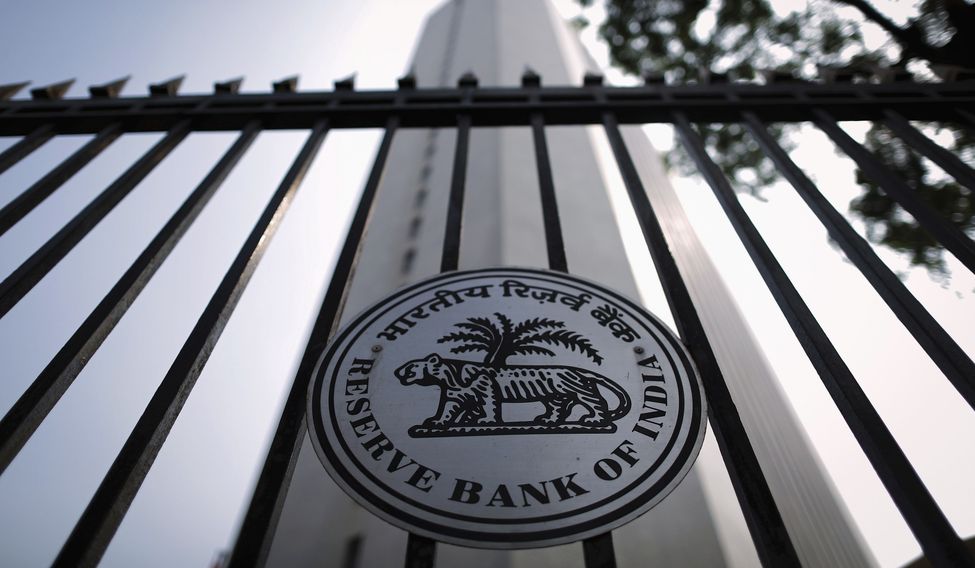Not giving in to government's pressure and demands for an interest rate cut from several sections, the Reserve Bank of India on Oct 4 maintained status quo, leaving its repo rate unchanged at 6 per cent and many analysts now expect it will continue to maintain a pause this fiscal year, unless risks to economic growth rise further and inflation trends below its estimates.
The central bank, however, reduced the statutory liquidity ratio (SLR, the reserves commercial banks need to maintain in form of cash, gold or government bonds) by 0.5 per cent to 19.5 per cent, which should open up some room for banks to cut lending rates as their liquidity will rise.
India's GDP (gross domestic product) growth in the April-June quarter declined sharply to 5.7 per cent, prompting calls from various sections of the industry for an interest rate cut. But the RBI seemed more worried about the rising inflation trajectory at this point of time, and therefore the decision to hold interest rates now.
Economists say increased financial market volatility due to global developments, like the US Federal Reserve starting to unwind its balance sheet, a risk of policy normalisation by the European Central Bank and higher oil prices may have also weighed.
“The RBI’s decision to maintain the status quo is indicative of its inclination to look through the near-term outlook, which is clouded by transitory factors and concerns over higher core inflation,” said Sonal Varma, chief India economist at Nomura Securities.
India's retail or consumer price index inflation rose to a five month high of 3.36 per cent in August and RBI expects it to be in the range of 4.2 per cent to 4.6 per cent in the second half of the year.
Implementation of farm loan waivers by states, implementation of the seventh pay commission salary and allowances award by states could push up headline inflation by 1 per cent above the baseline over 18-24 months, it warned.
“Though the inflationary pressures had subsided in the near term, from a medium term objective, the inflationary risks are still on the upside, so keeping the rates unchanged is a more cautious decision by the RBI,” said George Alexander Muthoot, MD, Muthoot Finance.
The central bank did acknowledge the lower economic growth and cut its own GVA (gross value added) growth forecast for the current financial year to 6.7 per cent from earlier estimated 7.3 per cent. However, it believes more structural reforms, rather than just rate cuts would help revive the growth.
“The following measures could be undertaken to support growth and achieve a faster closure of the output gap: a concerted drive to close the severe infrastructure gap; restarting stalled investment projects; enhancing ease of doing business, including further simplification of the GST; and ensuring faster rollout of the affordable housing program with time-bound single-window clearances and rationalisation of excessively high stamp duties by states,” Governor Urjit Patel said in RBI's post monetary policy conference.
Economists also expect GDP growth to pickup, as the effects of demonetisation are waning and restocking gathering pace post GST rollout.
Patel was also forthright on the issue of providing additional fiscal stimulus by the government to energise the economy.
“Given that the general government fiscal deficit, of the state and centre's accounts combined, is already in the region of 6 per cent of GDP, our national fiscal stance can hardly be described as tight. In other words, we should be very cautious...fiscal actions undercut macro economic stability,” said Patel.
With inflation focus high on RBI's minds and the central bank seeing more upside to its baseline estimates, economists see little to no chance that there will be any rate cuts any time soon.
“The likelihood of a rate cut during the remaining months of this fiscal is bleak unless retail inflation surprises on the downside and come lower than the central bank's guidance,” said Sunil Kumar Sinha, principal economist at India Ratings & Research.
The ratings agency expects retain inflation to trend around 4.5 per cent in March 2018.
“We expect no change (in rates) in December, and if at all there has to be a rate cut, it would be in the fourth quarter, provided inflation remains within 4 per cent,” said Madan Sabnavis, chief economist at Care Ratings.
It was a similar view expressed by Varma of Nomura Securities, who said the RBI may leave rates unchanged. “Weaker-than-expected growth, an undershooting of the 4 per cent inflation target and the government sticking to its budgeted fiscal consolidation target could open up room for more accommodation,” she said.






